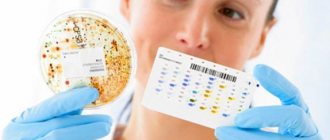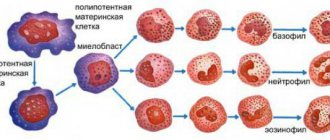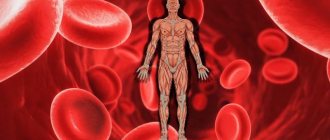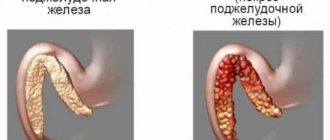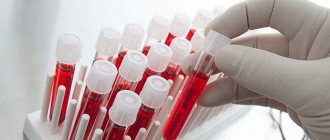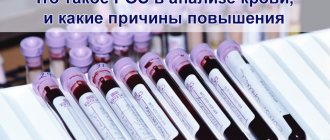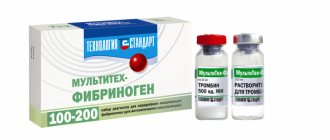Detailed description of the study
Topiramate (trade name Topamax) is a broad-spectrum antiepileptic drug (AED). The drug is a derivative of D-fructose and has a complex effect on the mechanisms of formation of epileptic seizures:
- Increases the activity of γ-aminobutyric acid (GABA) - one of the main inhibitory biologically active substances present in the central nervous system;
- Blocks Na+-dependent channels and increases the K+ current through the membranes of nerve cells, suppressing excitation processes (a similar effect has not been observed in other anticonvulsants);
- Modifies long-term voltage-regulated calcium channels;
- Selectively affects carbonic anhydrase, an enzyme involved in the development of attacks (the production of cerebrospinal fluid decreases, intracranial pressure and the intensity of excitation processes in the structures of the central nervous system decrease).
Topiramate is approved for use in children over 2 years of age and adults. It can be used in isolation (as monotherapy) or as part of combination regimens that include several drugs.
Topiramate compares favorably with previous generations of AEDs:
- It has high bioavailability, up to 80% of the substance reaches the site of action unchanged;
- Absorption, distribution and excretion of the drug are predictable;
- Indicated in difficult clinical situations, in patients with resistance to therapy with other drugs from the AED group;
- It has a number of additional effects: neuroprotective, psychotropic, and normalizes mood.
A long-term study of the drug has proven the effectiveness of its long-term use: up to 70-75% of patients demonstrate stable remission after a 12-month course of therapy.
Prescribed by a doctor, dosages are selected individually, usually starting with the minimum effective dose and then increasing it until significant improvement is achieved (reduction in the frequency, duration and intensity of epileptic attacks or their complete relief).
Increasing the dosage without prior assessment of the drug concentration in the blood is fraught with the development of side effects. A study of the concentration of topiramate in the blood plasma will help determine the optimal dose of the drug. Drug monitoring is especially important for individuals receiving multiple medications because, despite the low potential for drug interactions, the metabolism of topiramate may be altered by other medications.
It is known that approximately 20% of the total dose of the drug administered to the body undergoes biotransformation. Concomitant renal and liver failure significantly reduce the rate of elimination of the drug from the body. To optimize pharmacotherapy in the above cases, it is necessary to conduct an analysis to determine the concentration of topiramate in the blood.
1.What is blood osmolarity?
Blood osmolarity testing shows the amount of chemicals dissolved in the blood serum, the liquid part of the blood. Chemicals that affect blood osmotic concentration include sodium, chloride, bicarbonate, protein, and glucose. Blood osmolarity analysis is performed on venous blood material.
The osmotic concentration of the blood is partially controlled by a special antidiuretic hormone. Water constantly leaves our bodies - through sweat, urine and even breathing. If you do not drink enough water, then the osmolarity of the blood plasma, i.e. the concentration of chemicals is increasing. When the osmotic concentration of the blood increases, antidiuretic hormone is released into the blood. Antidiuretic hormone prevents fluid loss and increases its content in the blood. This helps blood plasma osmolarity return to normal.
On the contrary, if you drink too much water, your blood plasma osmolarity drops. When blood osmolarity drops, antidiuretic hormone is not produced. This increases the volume of urination, which prevents overhydration and fluid accumulation in the body.
References
- Gekht, A.B., Milchakova, L.E., Gusev E.I. Experience with Topamax: clinical and pharmacoeconomic aspects. Journal neurol. psychiat., 2005. - T.107. - No. 12. - P. 40-44.
- Zalyalova, Z.A., Latypova, G.R. Topiramate in the treatment of essential tremor. Journal neurol. psychiat., 2008. - T. 108. - No. 11. - P. 39-42.
- Karlov, V.A. Strategy and tactics of epilepsy treatment today. Journal neurol. psychiat., 2004. - T. 104. - No. 8. - P. 28-34.
- Fedin, A.I., Generalov, V.O., Mishnyakova, L.P. Topiramate in the treatment of epilepsy in adults. Bulletin of Epileptology, 2006. - No. 1. - P. 3-5.
- Arroyo, S., Dodson, W., Privitera, M. et al. Randomized dose controlled study of topiramate as first-line therapy in epilepsy. ActaNeurolScand., 2005. - Vol. 112(4). — P. 214-22.
- Marson, A., Al-Kharusi, A., Alwaidh, M. et al. The SANAD study of effectiveness of valproate, lamotrigine, or topiramate for generalized and unclassifiable epilepsy: an unblindedrandomised controlled trial. Lancet, 2007. - Vol. 369(9566). - P. 1016-26.
4.What are the risks and what could interfere with the analysis?
What are the risks of an osmolarity blood test?
Possible risks can only be associated with the blood collection itself. In particular, the appearance of bruises at the puncture site and inflammation of a vein or artery (phlebitis). Warm compresses several times a day will relieve phlebitis. If you are taking blood thinning medications, you may bleed at the puncture site.
What can change blood osmolarity?
Plasma osmolarity may change due to:
- Drinking alcohol before the test;
- Recent blood transfusion.
Water-electrolyte metabolism in the body of a healthy person: main components
Consideration of the metabolic pathways of a normally functioning organism is impossible without describing the exchange of low molecular weight compounds - mineral salts and water. As you know, water in an adult makes up 60% of body weight, that is, 40 - 45 liters. The biological significance of water contained in the human body cannot be overestimated. Water and the substances dissolved in it create the internal environment of the body. Water ensures the transport of substances and thermal energy throughout the body. A significant part of the body's chemical reactions occurs in the aqueous phase. Water participates in the reactions of hydrolysis, hydration, and dehydration. Determines the spatial structure and properties of hydrophobic and hydrophilic molecules. Since water is the medium in which metabolic processes take place in cells, organs and tissues, the continuous supply of water to the body is one of the main conditions for maintaining its vital functions. The bulk (about 71%) of all water in the body is part of the protoplasm of cells, making up the so-called intracellular water. Extracellular water is part of the intercellular, or interstitial, fluid (about 21%) and blood plasma water (about 8%). The water content in the body varies depending on the organs and tissues. The brain contains 70-84% of water from the total mass of the organ, the kidneys - 82%, the heart and lungs - 79%, the muscles - 76%, the skin - 72%, the liver - 70%, the bone tissue - 10%. Water that comes through the alimentary route is called exogenous, and water formed as a product of biochemical transformations is called endogenous. In addition, a distinction is made between free water, bound water and constitutional water. Bound water is retained by colloidal systems in the form of so-called swelling water. Constitutional or intramolecular water is part of the molecules of proteins, fats and carbohydrates and is released during their oxidation. Different tissues are characterized by different ratios of free, bound and constitutional water. All body water is renewed in about a month, and the extracellular water space is renewed in a week.
The body's water balance consists of water intake and excretion. A person receives about 1100 ml of water per day with food, and about 1200 ml in the form of drinks and clean water. About 300 ml of water is formed during the metabolic process during the oxidation of proteins, carbohydrates and fats. When evaporating from the surface of the skin and alveoli of the lungs, about 900 ml of water is released per day. 1500 ml of water is necessary to dissolve osmotically active substances excreted by the kidney at maximum urine osmolarity. The secretion of water into the digestive tube is 8200 ml, reabsorption is 8100 ml. 100 ml of water is excreted in feces. Simple calculations show. that the average daily human need for water is about 2500 ml.
Water balance of the human body.
| Average values of water balance parameters of the human body (ml/day) | |||
| Water consumption and production | Water release | ||
| Drinking and liquid food | 1200 | With urine | 1500 |
| Solid food | 1100 | With then | 500 |
| Endogenous "water of oxidation" | 300 | With exhaled air | 400 |
| With feces | 100 | ||
| Total Receipt | 2500 | Total Allocation | 2500 |
| Internal cycle of gastrointestinal fluids (ml/day) | |||
| Secretion | Reabsorption | ||
| Saliva | 1500 | ||
| Gastric juice | 2500 | ||
| Bile | 500 | ||
| Pancreas juice | 700 | ||
| Intestinal juice | 3000 | ||
| Total | 8200 | 8100 | |
| Total 8200 - 8100 = water in stool 100 ml | |||
It is obvious that water exchange is inextricably linked in the body with the exchange of electrolytes. Systems for regulating water-salt metabolism ensure that the total concentration of sodium, potassium, calcium, magnesium, and chlorine ions in the blood plasma, intracellular and extracellular fluid is maintained at the same level. In human blood plasma, the concentration of ions is maintained with a high degree of constancy and is (in mmol/l): sodium - 130-156, potassium - 3.4-5.3, calcium - 2.3-2.75 (including ionized, not associated with proteins - 1.13), magnesium - 0.7-1.2, chlorine - 97-108, bicarbonate ion - 27, sulfate ion - 1.0, inorganic phosphate - 1-2. Compared to blood plasma and intercellular fluid, cells have a higher content of potassium, magnesium, phosphate ions and a low concentration of sodium, calcium, chlorine and bicarbonate ions. Differences in the salt composition of blood plasma and tissue fluid are due to the low permeability of the capillary wall for proteins. Precise regulation of water-salt metabolism in a healthy person makes it possible to maintain not only a constant composition, but also a constant volume of body fluids, maintaining almost the same concentration of osmotically active substances and acid-base balance.
Minerals enter the body in free or bound form. Ions are absorbed already in the stomach, the main part of minerals is absorbed in the intestine through active transport with the participation of carrier proteins. From the gastrointestinal tract, minerals enter the blood and lymph, where they bind to specific transport proteins. Minerals are released mainly in the form of salts and ions. Sodium, potassium, calcium, magnesium, chlorine, cobalt, iodine, bromine, and fluorine are excreted in the urine. Iron, calcium, copper, zinc, manganese, molybdenum, and heavy metals are excreted in feces.
The most important ions in water-electrolyte homeostasis are sodium, potassium, calcium, and chlorine. Sodium (Na+) is the main cation in extracellular fluids. Its content in the extracellular environment is 6-12 times higher than the content in cells. Sodium in the amount of 3-6 g per day enters the body in the form of NaCl and is absorbed mainly in the small intestine. Sodium is involved in maintaining the balance of the acid-base state, the osmotic pressure of extracellular and intracellular fluids, takes part in the formation of the action potential, and influences the activity of almost all body systems. The sodium balance in the body is mainly maintained by the activity of the kidneys.
Potassium (K+) is the main cation in intracellular fluid. The cells contain 98% potassium. The daily human need for potassium is 2-3 g. The main source of potassium in food is products of plant origin. Potassium is of particular importance due to its potential-forming role both at the level of maintaining the membrane potential and in the generation of the action potential. The resting membrane potential, i.e., the potential difference between the cellular contents and the extracellular environment, is recognized due to the cell’s ability to actively absorb K+ ions from the external environment with the expenditure of energy in exchange for Na+ ions (the so-called K+, Na+ pump) and due to more higher permeability of the cell membrane for K+ ions than for Na+ ions. Due to the high permeability of the imprecise membrane for ions, K+ produces small shifts in the potassium content in the cells (normally this is a constant value) and the blood plasma leads to a change in the value of the membrane potential and the excitability of nervous and muscle tissue. Potassium also takes part in the regulation of the acid-base state through competitive interactions between K+ and Na+ ions, as well as K+ and H+, and is a factor in maintaining osmotic pressure in cells. Regulation of its excretion is carried out mainly by the kidneys.
Calcium (Ca2+) has high biological activity. It is the main structural component of skeletal bones, containing about 99% of all Ca2+. An adult should receive 800-1000 mg of calcium per day from food. Calcium is absorbed mainly in the duodenum in the form of monobasic salts of phosphoric acid. Approximately 3/4 of calcium is excreted by the digestive tract, where endogenous calcium enters with the secretions of the digestive glands, the rest is excreted by the kidneys. Calcium takes part in the generation of the action potential, in the initiation of muscle contraction, is a necessary component of the blood coagulation system, increases the reflex excitability of the spinal cord and has a sympathicotropic effect.
Magnesium (Mg2+) in terms of content in the body ranks fourth among body cations and second among intracellular cations. The amount of total magnesium contained in the adult body is 20–28 g. About 1% of magnesium is in the extracellular fluid, approximately 60% in bones, 20% in muscles. The remaining 20% comes from other body tissues, with the majority concentrated in liver cells. In blood plasma, the concentration of magnesium is 0.75–1.25 mmol/l. Of this amount, 55–60% of plasma magnesium is ionized, 15% is associated with organic and inorganic acids. Only ionized magnesium is biologically active, the concentration of which in plasma is 0.45–0.75 mmol/l. Magnesium performs the following physiological functions: it is part of bones, is a calcium antagonist, affects the permeability of biological membranes, activates fibrinolysis, and participates in the functioning of many enzymes associated with ATP metabolism as a cofactor.
content ( Cl - ) in the body is about 100 g. In blood plasma (serum), its concentration reaches 97–108 mmol/l. Its physiological function is associated with participation in the formation of transmembrane potential. Being the main anion of extracellular fluid, chlorine ion is actively involved in ensuring electrical neutrality. Due to the presence of special chlorine channels in the membranes of cells and mitochondria, chloride ions regulate the volume of fluid and transepithelial transport of ions, which creates and stabilizes the membrane potential. The mechanisms of chlorine regulation are associated with processes that stabilize the sodium content. Due to the fact that chloride ions are able to penetrate the cell membrane, they, together with sodium and potassium ions, maintain osmotic pressure and regulate water-salt metabolism. Chlorine is a component of hydrochloric acid in gastric juice, which denatures proteins and activates pepsinogen. create a favorable environment in the stomach for the action of proteolytic enzymes of gastric juice. In addition, chloride ions are involved in creating and maintaining pH in cells and biological fluids of the body.
Phosphorus (P) belongs to the structural (tissue-forming) macroelements; its content in the adult body is about 700 g. Most of the phosphorus (85-90%) is found in bone tissue and teeth, the rest is in soft tissues and fluids. About 70% of the total phosphorus in the blood plasma is contained in organic phospholipids, about 30% is represented by inorganic compounds (10% compounds with protein, 5% complexes with calcium or magnesium, the rest are orthophosphate anions). The biological role of phosphorus in the body is as follows. Phosphorus is part of many body substances (phospholipids, phosphoproteins, nucleotides, coenzymes, enzymes). Phospholipids are the main component of the membranes of all cells in the human body. In bones, phosphorus is found in the form of hydroxyapatite, in teeth in the form of fluorapatite, performing a structural function. Phosphoric acid residues are part of nucleic acids and nucleotides, as well as adenosine triphosphoric acid (ATP) and creatine phosphate. Residues of phosphoric acid are part of the blood buffer system, regulating its pH.
